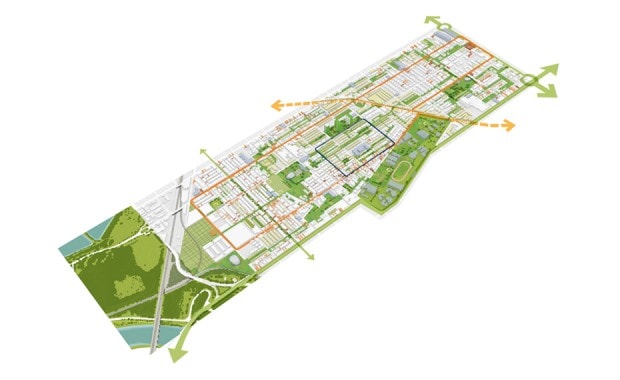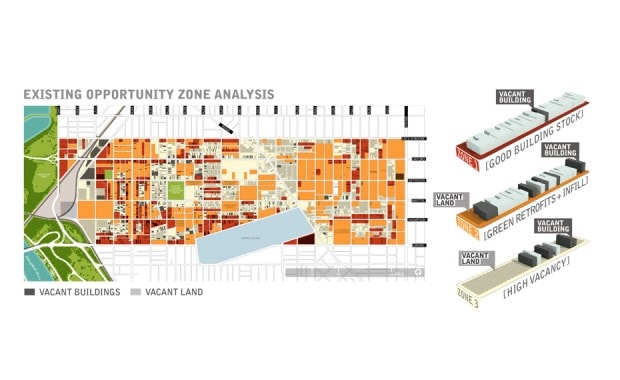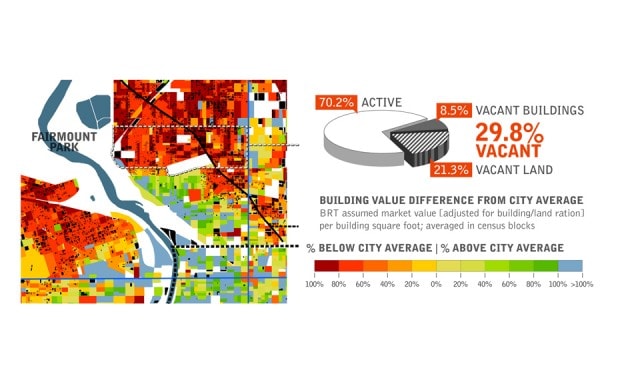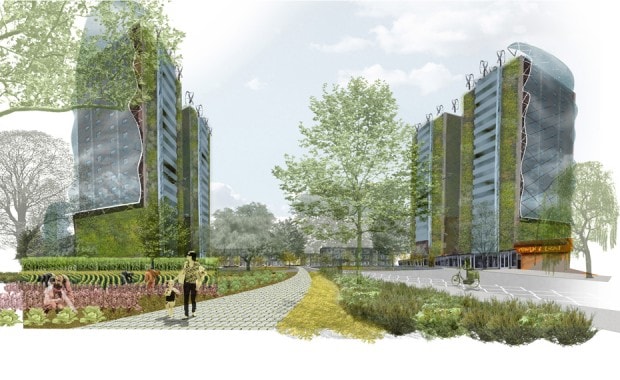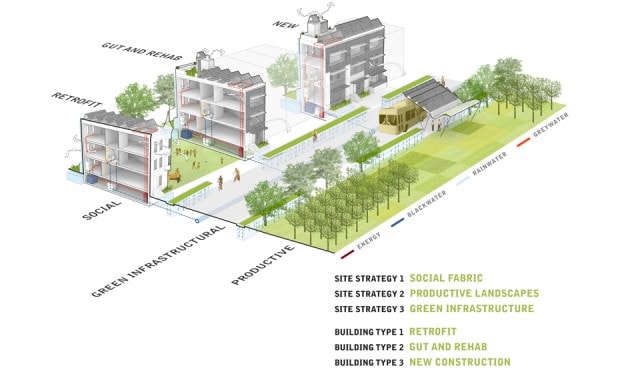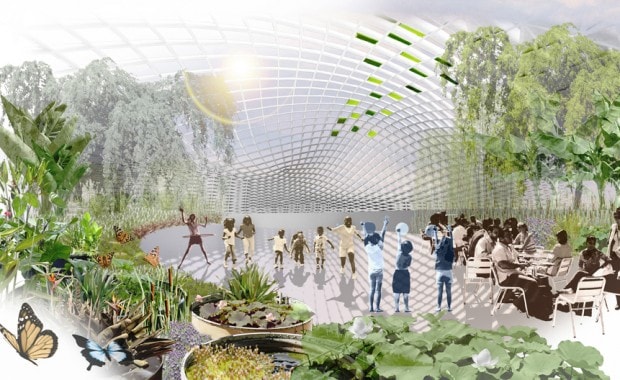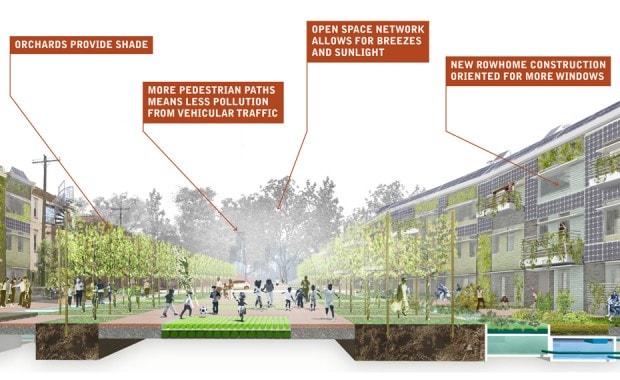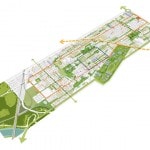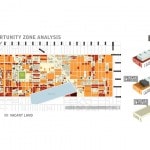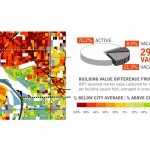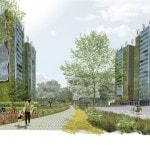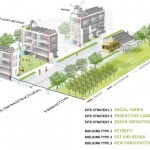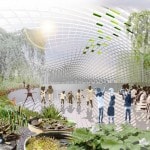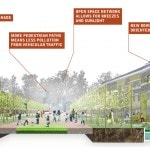Project: PatchWork, Living City Design Competition
Location: Philadelphia, Pennsylvania, United States
Firm: OLIN
Year: 2011
Firm Website: www.theolinstudio.com
Project Description: OLIN’s award-winning submission to the Living City Design Competition responded to ambitious standards of sustainable development within the historically rich, yet socially and ecologically underserved neighborhoods of Brewerytown and North Central in Philadelphia. Working closely with the architects and urban planners Digsau and Interface Studio, the OLIN team explored how sustainable design can be implemented within an existing urban framework by utilizing local resources, community engagement, and respect for vernacular culture and architecture.
Using an “evolving block” strategy, the team phased incremental and achievable improvements over a span of twenty-five years. To meet 100% on-site renewable energy for thousands of households, homes are retrofitted with façades of photovoltaic panels, and the commercial spine along Ridge Avenue is shaded with canopies that collect solar power. Vacant parcels punctuating blocks of row homes transform into a pedestrian-friendly network of green spaces populated by play areas, community gardens, and urban farms. Existing row homes are either retrofitted, renovated, or replaced. Structural materials deemed necessary for demolition are salvaged for reuse elsewhere in the neighborhoods, thereby supplying over thirty million bricks and three million square feet of wood for building new homes.
Rain gardens and roof cisterns combine with district-level “living machine” water treatment centers located along the green space network. This integrated system reduces the neighborhoods’ per capita potable water consumption from 69.3 gallons per day (the amount used by an average American) to 9.2 gallons, and eases demand on the city’s aging and over-burdened combined stormwater and sewer system. The long-abandoned Red Bell Brewery is refurbished, creating local jobs and opportunities for locavore farming. This measure contributes to the goal of meeting 80% of the district’s food needs within a 500-mile radius.
Image Credits: The Olin Studio.
Project Team Members: DIGSAU, Interface Studio
| previous project | next project |
